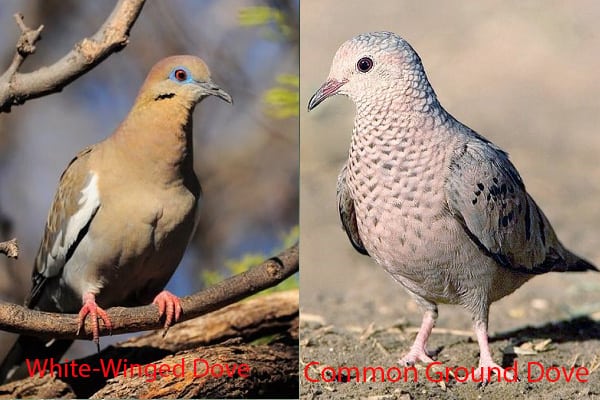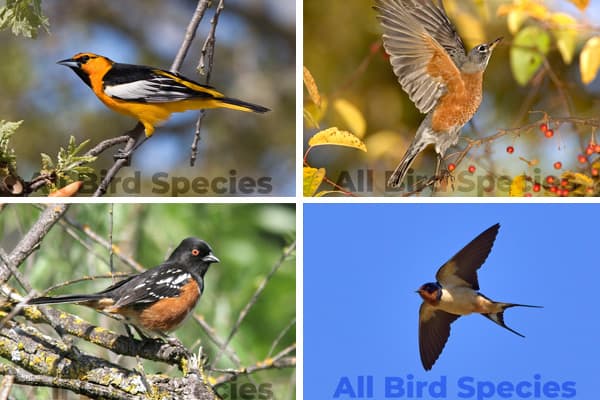7 Hummingbirds In Kansas (ID Guide With Pictures)
Did you know hummingbirds in Kansas can flap their wings up to 80 times per second? This is amazing. It shows how agile and full of energy these small birds are. Kansas has seven unique hummingbird species, each with bright colors and interesting behaviors.
This guide will help you spot these beautiful birds. It has clear pictures and detailed descriptions. Whether you’re an experienced birder or just starting, you’ll learn a lot about Kansas’s hummingbirds. This will make your birdwatching adventures even better.
Overview of Hummingbird Characteristics
Hummingbirds are truly amazing birds. They have long bills and special tongues for drinking nectar. Their bright colors and small size make them a joy to watch.
These birds are known for their fast wings. They can flap up to 80 times a second. This lets them hover in the air. They also defend their food spots from other birds.
How they build nests varies by species. This shows how flexible they are in different places.
In short, hummingbirds are loved for their unique looks and behaviors. Every detail we see helps us appreciate them more.
1. Ruby-throated hummingbird
- Scientific Name: Archilochus colubris
- Size: 7.5–9 cm (3–3.5 in)
- Weight: 2–4 g (0.07–0.14 oz)
- Lifespan: Up to 9 years in the wild
- Diet: Nectar from flowers, supplemented with insects
The Ruby-throated Hummingbird is the most common in Kansas. It lives in the eastern parts of the state. Knowing their scientific name and lifespan helps us understand them better.
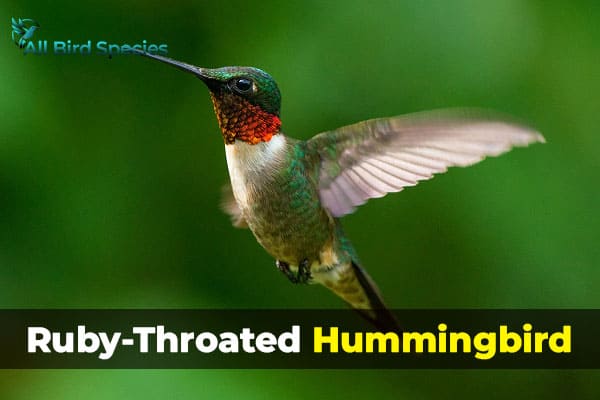
Scientific Classification and Lifespan
Their scientific name is Archilochus colubris. Ruby-throated Hummingbirds live about 5 to 7 years. Some may live longer, depending on their environment and predators.
They migrate from Central America and Mexico. They can go as far north as Canada in the spring.
Feeding Habits and Behavior
Ruby-throated Hummingbirds mainly eat nectar from flowers. They like flowers that attract other pollinators. Their long tongues help them get nectar easily.
In gardens, they fly from flower to flower. This shows their amazing flying skills.
They also defend their territory, especially males. This keeps them safe from other males. During the off-season, they focus on finding food to keep their energy up.
What sounds do Ruby-throated Hummingbird make?
2. Anna’s Hummingbird
- Scientific Name: Calypte anna
- Size: 8–10 cm (3–4 in)
- Weight: 3–4 g (0.11–0.14 oz)
- Lifespan: Up to 4 years in the wild
- Diet: Nectar from flowers, supplemented with insects and spiders for protein.
Seeing an Anna’s Hummingbird is a joy for bird lovers. This bird is known for its quick moves and bright colors. It’s small but has special traits that make it stand out.

Distinctive Features and Habitat Preferences
The Anna’s Hummingbird is 3.9 to 4.3 inches long. It has a shiny red crown that catches the light. Its feathers are also green and gray, making it very attractive.
These birds are mostly seen on the West Coast. But, you might see them in Kansas too. They love places with lots of flowers. Look for them in public gardens with exotic plants. Watching these spots can make your birdwatching trip better.
What sounds do Anna’s Hummingbird make?
3. Allen’s Hummingbird
- Scientific Name: Selasphorus sasin
- Size: 7.5–9 cm (3–3.5 in)
- Weight: 2.5–4 g (0.09–0.14 oz)
- Lifespan: Up to 5 years in the wild
- Diet: Nectar from flowers, supplemented with insects and spiders for protein.
The Allen’s Hummingbird (Selasphorus sasin) is a stunning bird. It has a rusty color and an iridescent orange throat. You might see it in Kansas as it travels from the western U.S. and South America. Knowing how to spot this bird is key for bird lovers.
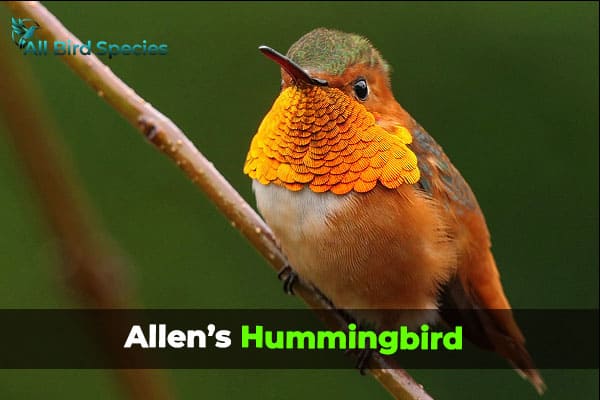
To identify the Allen’s Hummingbird, look for these important features:
- Male Characteristics: Males show off a bright orange throat that really pops against their body.
- Size: They are small, about 3 to 4 inches long.
- Behavior: Males are very protective of their food spots and can be quite aggressive.
- Habitat Preference: They usually live in the west, but you might see them in city gardens and by the coast during migration.
When you go bird watching, remember their unique looks and actions help you spot them. Watching them defend their territory is a fun way to learn about their nature.
What sounds do Allen’s Hummingbird make?
4. Black-Chinned Hummingbird
- Scientific Name: Archilochus alexandri
- Size: 7.5–9 cm (3–3.5 in)
- Weight: 2.5–4 g (0.09–0.14 oz)
- Lifespan: Up to 5 years in the wild
- Diet: Nectar from flowers, supplemented with insects and spiders for protein.
The Black-Chinned Hummingbird is a fascinating species that can be seen in Kansas. It’s not as common as other hummingbirds, and the males have a striking black throat, making them stand out.
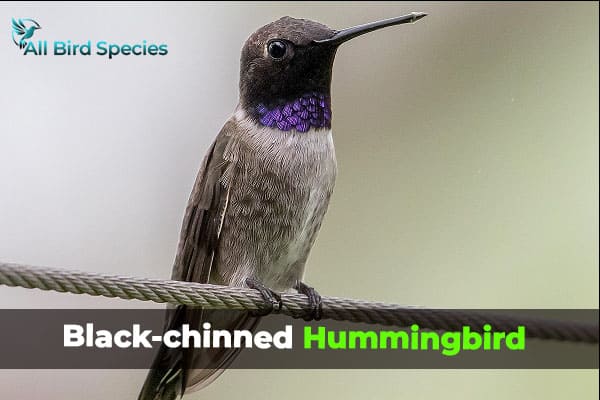
Knowing about its nesting habits and conservation status helps us understand its needs. It tells us about its environmental preferences and the efforts to protect it.
Nesting Habits and Conservation Status
The Black-Chinned Hummingbird’s nesting habits show how adaptable it is. Females build nests high up in trees. This keeps their young safe from predators.
This bird is currently listed as “Least Concern.” This helps keep its population stable in different habitats. Even though conservation efforts might be small, they are crucial for the ecosystem.
What sounds do Black-Chinned Hummingbird make?
5. Broad-Tailed Hummingbird
- Scientific Name: Selasphorus platycercus
- Size: 8–10 cm (3–4 in)
- Weight: 3–4 g (0.11–0.14 oz)
- Lifespan: Up to 5 years in the wild
- Diet: Nectar from flowers, supplemented with insects and spiders for protein.
The Broad-Tailed Hummingbird (Selasphorus platycercus) is a favorite among birdwatchers. It migrates through Kansas each spring and fall. This journey shows how resilient and adaptable this species is.
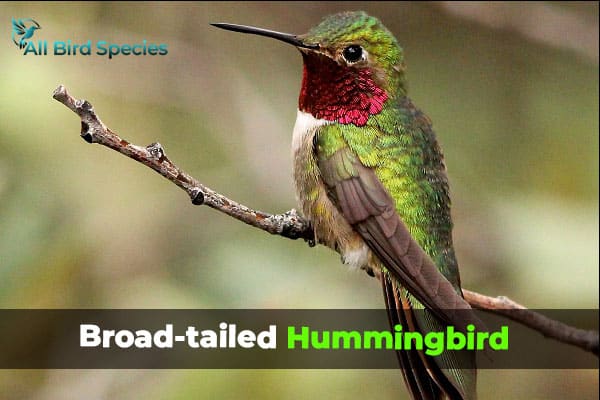
These birds love oak or pine woodlands, which help them eat and show off during courtship. Watching a male Broad-Tailed Hummingbird perform his aerial tricks is thrilling.
Female Broad-Tailed Hummingbirds often nest in the same spot every year. This helps their chicks grow up safely. Seeing these birds during migration is a special treat.
What sounds do Broad-Tailed Hummingbird make?
6. Rufous Hummingbird: A Rare Visitor
- Scientific Name: Selasphorus rufus
- Size: 7.5–9 cm (3–3.5 in)
- Weight: 2.5–4 g (0.09–0.14 oz)
- Lifespan: Up to 5 years in the wild
- Diet: Nectar from flowers, supplemented with insects and spiders for protein.
The Rufous Hummingbird is known for its striking appearance and remarkable journeys. This small bird, scientifically named Selasphorus rufus, boasts stunning physical characteristics. It has a fiery orange throat and vibrant rufous feathers.
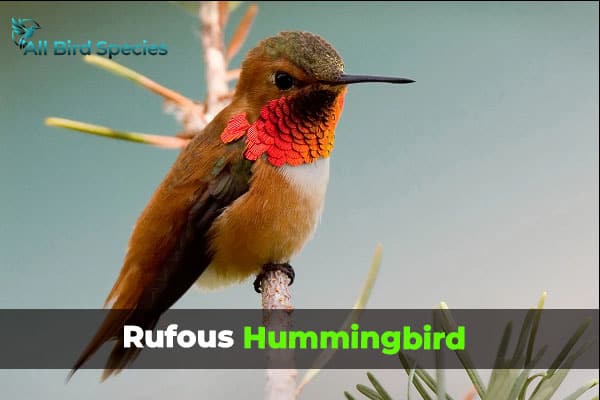
It measures between 2.8 and 3.5 inches in length. Such distinctive traits give the Rufous Hummingbird a special place in the hearts of bird watchers.
Physical Characteristics and Migration Distance
The Rufous Hummingbird exhibits notable physical characteristics that are easily recognizable. Its dazzling plumage not only serves as a visual spectacle but also plays a significant role during breeding seasons. Males display their colors to attract mates.
In terms of migration, these small birds exhibit incredible endurance. Many individuals make the arduous journey between their breeding grounds in North America and wintering habitats in Mexico. They often cover over 2,000 miles. This remarkable migration distance highlights the Rufous Hummingbird’s tenacity and adaptability in navigating vast landscapes.
Due to their long-distance migratory patterns, sightings of the Rufous Hummingbird in Kansas can be rare. Additionally, conservation concerns have become more prominent as recent classifications label them as Near Threatened. This status emphasizes the importance of monitoring their population and supporting efforts for their protection.
What sounds do Rufous Hummingbird make?
| Feature | Description |
|---|---|
| Scientific Name | Selasphorus rufus |
| Size | 2.8 – 3.5 inches |
| Coloration | Fiery orange throat and rufous plumage |
| Migration Distance | Over 2,000 miles |
| Conservation Status | Near Threatened |
Where To Spots Hummingbirds in Kansas
If you want to see hummingbirds while walking in nature, here are some tips:
- Pay close attention to small details because hummingbirds are tiny and move really fast.
- Start by exploring trails in Kansas state parks. They’re designed for spotting wildlife, and you can often find guides to help you identify different species.
- Check out local Audubon groups. They often lead tours and can teach you a lot about birds.
- If you’re new to birdwatching, consider going on a guided tour. Experienced guides can help you spot birds that might be hard to see on your own, especially if they’re rare in your area, like hummingbirds.
Read More🐦Related Articles:
- Kingfisher Bird
- Brown Birds Spiritual Meaning
- Blue Jay Sign From Heaven
- Black and White Birds in Michigan
- Small Green Birds in Florida
- Black Birds In Florida
- Spiritual Meaning of Birds Chirping at 3am
Final Words
Watching Kansas hummingbirds is a special way to connect with nature. It’s exciting for both new and experienced birdwatchers. Seeing these colorful birds up close is truly rewarding.
Knowing about the different hummingbird species in Kansas, like the Ruby-Throated and Black-Chinned, makes their beauty even more special. It deepens our understanding and love for these birds.
When you go birdwatching, remember how important conservation is. Protecting their homes helps future generations enjoy these birds. Supporting local groups that protect bird habitats is key to keeping Kansas’s ecosystems healthy.
This guide was meant to help you love hummingbirds more and understand their needs. Every time you see one, it reminds us of nature’s balance and why we must protect it. So, pick up your binoculars and enjoy watching Kansas hummingbirds. Your next sighting could start a lifelong love for birdwatching and caring for our planet.
Frequently Asked Questions
Q1. What month are hummingbirds in Kansas?
Hummingbirds typically arrive in Kansas in late April to early May and stay until September or October.
Q2. How do you attract hummingbirds in Kansas?
To attract hummingbirds, plant native flowers like bee balm, trumpet vine, or red salvia. Use feeders with sugar water (1 part sugar to 4 parts water) and keep them clean and filled.
Q3. Which US state has the most hummingbirds?
California is known to have the most hummingbird species and the highest population density of hummingbirds in the United States.
Q4. Where do hummingbirds live in the US?
Hummingbirds live in various habitats across the US, including forests, gardens, and coastal areas. They can be found in almost every state during the breeding season and migrate to warmer regions in the winter.




